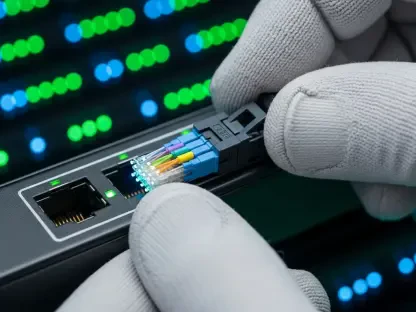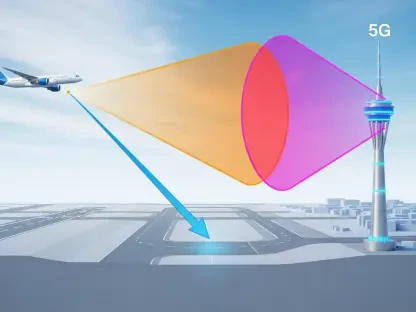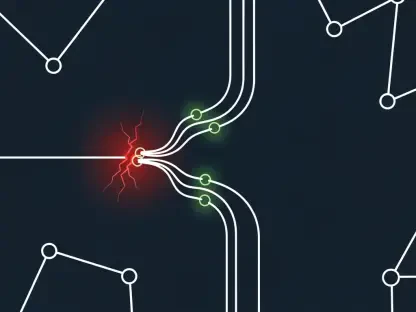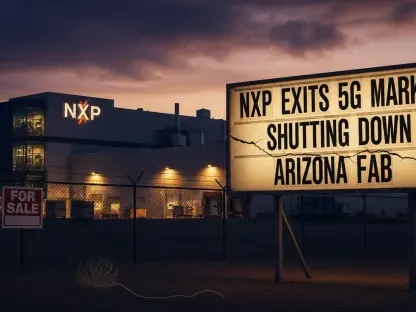Today, we’re thrilled to sit down with Vladislav Zaimov, a seasoned telecommunications specialist with deep expertise in enterprise telecommunications and risk management of vulnerable networks. With years of experience in the field, Vladislav offers invaluable insights into the complex world of fiber-optic network infrastructure. In this interview, we’ll explore the strategic decisions behind fiber network topologies, the unique approaches of different companies, the challenges of deployment in diverse environments, and the looming concerns around fiber supply in the coming years. Let’s dive into how these choices shape the future of broadband connectivity.
Can you break down what fiber network topology means and why it’s such a critical decision for telecom companies?
Absolutely. Fiber network topology refers to the layout or structure of how fiber-optic cables are arranged to connect homes, businesses, or other endpoints to a central network hub. It’s essentially the blueprint of the network, determining how data travels and how resources are allocated. This decision is critical because it affects everything from the cost of deployment to the scalability of the network, the amount of fiber needed, and even the ease of maintenance. For telecom companies, choosing the right topology can mean the difference between a cost-effective, future-proof network and one that struggles to meet demand or incurs high operational costs.
How do different topologies influence the amount of fiber required for a network rollout?
Different topologies have a direct impact on fiber usage due to how they distribute connections. For instance, a centralized topology, where fibers radiate from a central office to distribution hubs, often requires more fiber because each connection might need a dedicated strand over long distances. On the other hand, topologies like optical tap use unbalanced splitting to serve multiple customers with a single fiber, drastically reducing the total fiber needed. Distributed topologies fall somewhere in between, using smaller hubs to minimize fiber runs. With fiber shortages on the horizon, optimizing usage through topology choice is becoming a top priority.
What are some key differences between centralized, distributed, and optical tap topologies in terms of design and application?
Centralized topologies mirror older copper networks, with fibers running from a central office to large distribution hubs, splitting to serve dozens of homes. They’re straightforward but can be fiber-intensive and often require permits for large infrastructure. Distributed topologies spread out the splitting across smaller, localized hubs, reducing fiber needs and easing permitting burdens since the equipment is less obtrusive. Optical tap, however, is quite unique—it uses a single fiber with unbalanced splits, dropping off a portion of the signal at each stop to serve a few customers while continuing down the line. It’s incredibly fiber-efficient, making it ideal for sprawling suburban or rural areas, though it can be trickier to manage signal quality over long distances.
Why might a company initially opt for a centralized architecture when building out a fiber network?
Centralized architectures have historically been a go-to because they’re a familiar model, rooted in the design of legacy copper networks. They offer simplicity in planning and management since everything stems from a central point, making it easier to monitor and maintain. For a company starting out or building in a dense urban area, this setup can also provide the flexibility to handle future growth if neighborhoods densify. It’s a safe bet when you’re prioritizing control and predictability over immediate cost savings on fiber.
What factors could push a company to shift toward distributed topologies over time?
A shift to distributed topologies often comes down to practicality and cost as networks expand. These designs use smaller, more localized equipment, which cuts down on the amount of fiber needed for long runs and reduces the need for extensive permitting compared to the large hubs in centralized setups. This can improve relationships with cities and speed up deployment, especially in urban or suburban areas where red tape is a major hurdle. Additionally, distributed systems can be more adaptable to uneven growth patterns, allowing companies to scale incrementally without overbuilding.
How do permitting challenges and city relationships factor into topology decisions?
Permitting is a huge factor. Large equipment like fiber distribution hubs in centralized topologies often requires extensive approvals, which can delay projects and strain relationships with local governments. Distributed topologies, with their smaller, less intrusive setups, frequently bypass these hurdles, making them a more diplomatic choice. Building trust with cities isn’t just about speed—it’s about showing you’re minimizing disruption. Companies that choose topologies easing the permitting burden often find smoother paths to expansion and better long-term partnerships.
What are some of the biggest hurdles in deploying new fiber infrastructure in urban and suburban settings?
Urban and suburban deployments come with a host of challenges. In cities, you’re dealing with dense populations, existing underground utilities, and strict zoning laws, which can make digging or installing equipment a nightmare. Suburban areas might have more space, but you’re often navigating sprawling layouts and inconsistent demand, which complicates planning. Across both, permitting delays, community pushback, and the sheer cost of labor and materials for new physical infrastructure are constant headaches. Every pole, trench, or hub is a battle against time and budget.
Why would a company choose optical tap as their standard topology for new fiber builds?
Optical tap is often chosen for its incredible efficiency in fiber usage, especially for companies operating in suburban or rural areas with spread-out populations. It allows a single fiber to serve multiple customers through unbalanced splitting, where a portion of the signal is dropped off at each point while the rest continues. This drastically cuts down on the total fiber needed compared to other topologies. For companies looking to minimize costs and prepare for potential fiber shortages, optical tap offers a lean, practical solution without sacrificing reach.
How does optical tap specifically reduce fiber needs compared to other architectures?
Optical tap’s magic lies in its unbalanced splitting. Instead of dedicating multiple fibers or splitting evenly at a hub like in centralized or distributed setups, it takes a single fiber and apportions the signal unevenly at each tap point—say, dropping 30% to serve a few homes while 70% continues down the line. This cascading effect means you’re not running separate fibers for every segment, so one strand can cover the same number of customers that might otherwise require dozens of fibers in other topologies. It’s a game-changer for reducing material costs.
What unique advantages does optical tap bring to networks in suburban and rural areas?
In suburban and rural settings, where homes are more spread out, optical tap shines because it minimizes the fiber needed to cover long distances. Its design allows a single line to serve multiple customers sequentially without the need for large hubs or extensive cabling, which is ideal for areas with lower density. This not only cuts costs but also simplifies deployment in regions where infrastructure like central offices might be far away. Plus, it reduces the physical footprint, which can be a big win in areas sensitive to construction disruption.
What are the primary cost considerations when selecting a fiber network topology?
Cost is a multifaceted issue in topology selection. First, there’s the raw material cost—fiber itself, especially with shortages looming, can be a significant expense, so topologies that use less are attractive. Then you’ve got infrastructure costs, like central offices or distribution hubs, which vary widely by topology. Permitting fees and labor for installation are huge, often dwarfing material costs in urban areas. Operational expenses, like splicing and maintenance, also factor in. Every decision is a balancing act between upfront investment and long-term savings.
How do infrastructure requirements shape the choice of topology for a network?
Infrastructure needs are a driving force behind topology decisions. Centralized setups demand robust central offices and large distribution hubs, which can be costly and space-intensive, making them less ideal in areas where real estate is at a premium. Distributed topologies require more, but smaller, equipment spread across the network, which can be easier to place but increases complexity. Optical tap often needs less infrastructure overall since it relies on minimal splitting hardware along the line. Matching topology to available or feasible infrastructure is crucial for keeping projects on track.
What is your forecast for the impact of the anticipated fiber shortage on network planning and topology choices in the coming years?
I think the projected fiber shortage around 2026 will push companies to rethink their strategies significantly. We’ll likely see a stronger shift toward fiber-efficient topologies like optical tap, especially for new builds in less dense areas. Companies will also prioritize supply chain partnerships to secure materials early, and there might be more focus on recycling or reusing existing fiber where possible. The shortage could accelerate innovation in lean designs and alternative materials, but it’ll also put pressure on costs and timelines, forcing tougher decisions on where and how to expand networks. I expect topology choices to become even more strategic as a hedge against scarcity.









